寓教于乐:
论公共空间在促进意义学习论体验中起到的作用
全世界已越来越关注教育,中国在飞速发展中,中国更是如此。在快速发展带来经济效益的同时,也伴随着对高分的激烈竞争,这种竞争伴随着以记忆为主的学习方法给学习者带来了额外的挫折和焦虑。从心理学的角度来看,长期来看,高压力会导致学习成绩下降1,表现为分数较低和创造性思维能力发展不足等负面影响。然而,许多家长和教育专业人士似乎忽视了这些方面。另一方面,他们似乎忽视了物理环境对学习结果的巨大影响2,以及如何利用设计为儿童创造更好的学习环境。
Learning through play:
The role of public space in facilitating meaningful learning experiences
Education has become a reason for increasing concern across the whole world, but even more soin China, considering the country's extremely rapid development. With all the economic benefits rapid development brings, it also comes with fierce competition for high scores, which along with the learning methods employed focused mostly on memorization create additional frustration and anxiety for learners. From a psychological point of view, on the long-term, high pressure leads to reduced academic performance1, reflected through lower scores and less developed creative thinking skills, among other negative effects. Yet many parents and educational professionals seem to be oblivious to these aspects. Another aspect that they seem to be oblivious to is the great influence that the physical environment has on learning outcome2 and how to use design to create better learning environments for children.

为寓教于乐而设计的安全物理环境
摄影师:Amey Kandalgonkar
Safe physical environment designed for learning through play
Photo: Amey Kandalgaonkar
为了使大家对这些问题有更多的认识,在本文中,佰筑将分享有关“通过游戏学习”(也称为“游戏学习”)的概念,以及神经生物学益处和物理空间设计在促进学习中所起的作用包括学习如何通过此方式来帮助减轻儿童的焦虑并提高学业成绩的更多见解。
In order to create more awareness about these issues, in this article we will share more insight on the "learning throughplay", also called "playful learning" concept, its neurobiological benefits, the role that physical space design plays in facilitating such type of learning and how to use it to help reduce children's anxiety and enhance academic performance.
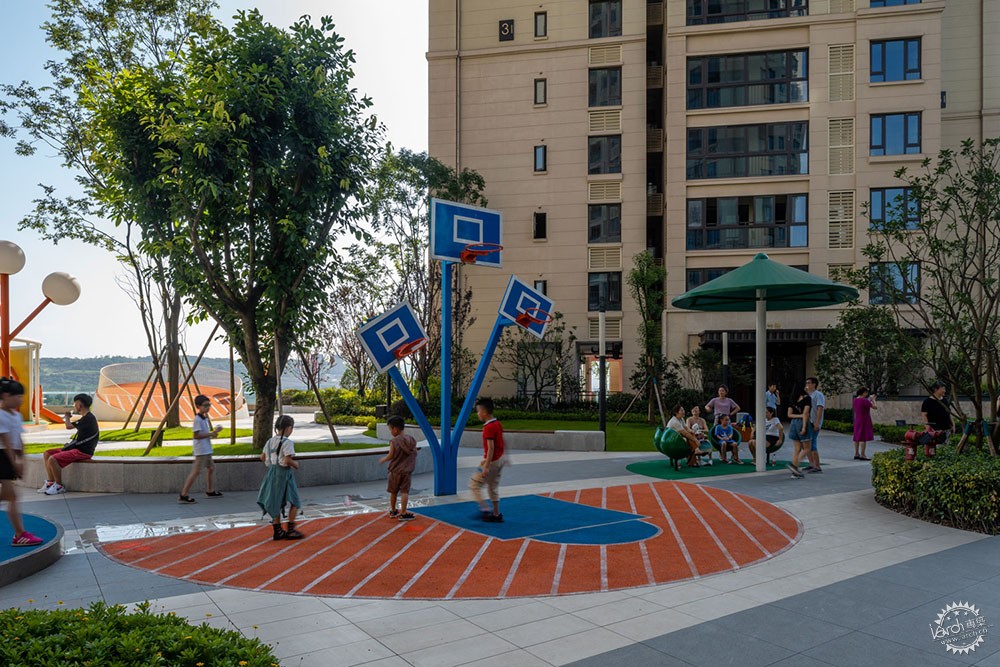
游戏在儿童的教育和发展中起着关键作用
摄影师:邹及人
Play has a key role in children's education & development
Photo: Rex Zou
什么是玩乐学习?
“玩乐学习”是一种完整的儿童教育方法,包括无监督的游戏和引导性游戏。这种类型的学习发生在所谓的“游戏式学习环境”中,其特点是室内和室外,在创新方式上得到技术性提高3。
What is "playful learning"?
"Playful learning" is a whole-child approach to education that includes both unsupervised play and guided play. This type of learning takes place in what is called "playful learning environment", characterized by both indoors and outdoors components, usually enriched technologically in an innovative way3.

佰筑设计的无监督户外娱乐环境
摄影师:邹及人
Unsupervised Outdoor Playful environment by 100architects
Photo: Rex Zou
人们发现这种学习非常有效,因为除了促进低焦虑状态外,它还提供了获得全新体验和积极参与的机会4。寓教于乐促使孩子们向同龄人和成年人学习,以有趣的方式建立沟通和协作的技能。例如,一场捉迷藏游戏可以帮助孩子们管理对未知事物的感受,同时也可以帮助他们思考其他人所知及所见5。
This type of learning has been found to be very effective because apart from promoting a state of low anxiety, it provides opportunities for completely new experiences and active engagement4. It allows children to learn from peers andadults, building skills of communication and collaboration in a fun and entertaining way. For example, a game of hide-and-seek helps children to manage feelings about the unknown while also helping them to think about what other people know and see5.
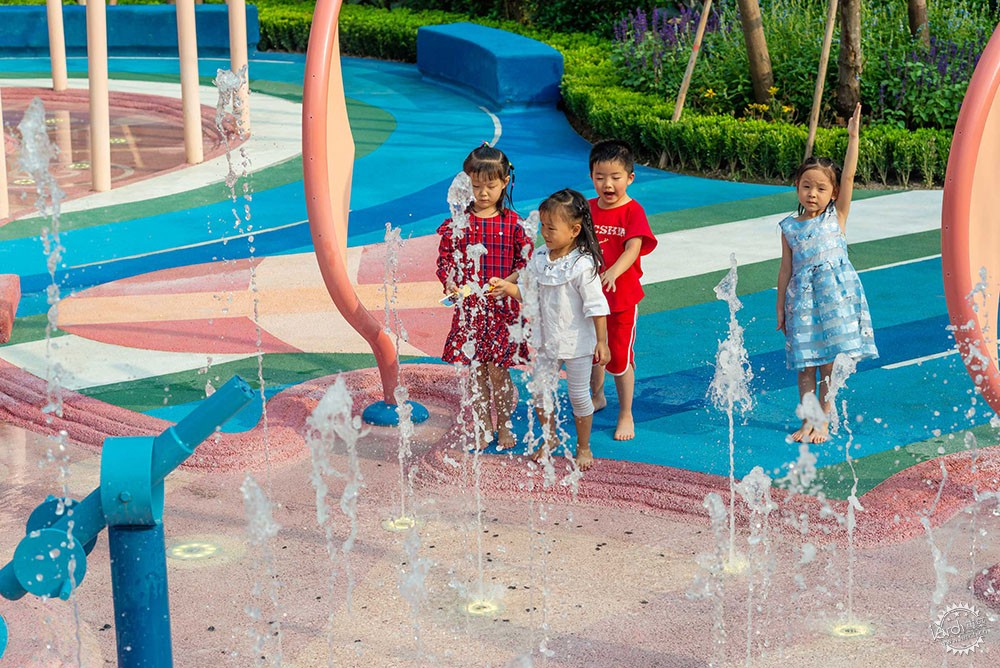
社交互动和参与可以培养沟通和协作技能
摄影师:Amey Kandalgonkar
Social interaction and engagement build up communication & collaboration skills
Photo: Amey Kandalgaonkar
从神经科学的观点来看,学习是指神经系统在基本和复杂的层面上处理和响应不同环境因素或感官输入的能力。这些反应对儿童学习行为的正确发展不仅是非常有帮助的,而且是必要的。因此,从神经生物学的角度来看,“玩乐学习”可以帮助孩子从过往的经历中学习,并在现有知识的基础上进一步增强认知能力。为了最大限度地提高学习成果,这种学习必须具有五个特征:快乐,赋予意义,积极参与,迭代和社交互动,所有这些特征都有助于促进成长中的儿童发展和激发大脑过程中的相互联系,并提升他们的学习能力6。
From aneuroscience point of view, learning refers to the neural capacity to process and respond to different environmental elements, or sensory inputs, on both basic and complex levels. Such responses are very helpful, if not essential, for the proper development of learning behaviors for children. So, from aneurobiological perspective, "playful learning" can contribute to children' sability to learn from previous experiences and build upon existing knowledge further enhancing cognitive skills. In order to maximize learning outcomes, this type of learning must bear five characteristics: joyful, meaningful, actively engaging, iterative and socially interactive, all found to facilitate the development and activation of interconnected brain processes in growing children and support their capacity to learn 6.
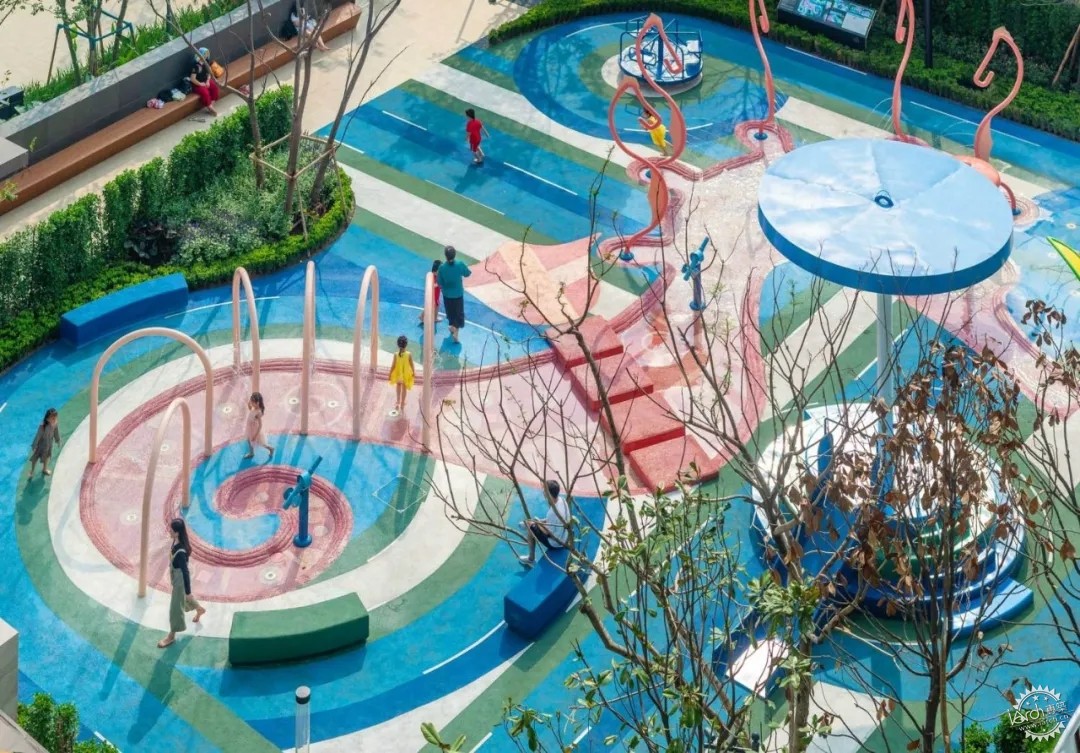
佰筑设计的超刺激感官游戏环境
摄影师:Amey Kandalgonkar
Hyper-stimulating and sensorial playingenvironment by 100architects
Photo: Amey Kandalgaonkar
这五个特征如何提升学习能力?
快乐
适应包括学习,而快乐的目的是激励我们在任何时候继续向我们所在的不同环境学习、不断适应它。更重要的是,研究发现快乐程度的提高与更高的认知功能有关,因为它们与多巴胺水平的提高有关。这会导致积极情绪6,通过增强神经活动来缓解被动的学习过程,激发好奇心和内在动机7。同样研究发现多巴胺的增加也与创造性思维能力的增强有关8。
How are these five characteristics supporting capacity to learn?
Joy
Adaptation involves learning and joy has the purpose to motivate us to continue learning from and adapting to our environments at any given time. What's more, research has found that enhanced levels of joy are associated with higher cognitive functions, given their association with increases in dopamine levels. This results in positive emotions6 that ease the learning process fuel curiosity and intrinsic motivation through enhanced neural activity7. Increase in dopamine was also found to correlate with enhanced creative thinking skills8.

中国重庆“梦马行云”欢乐活动
摄影师:邹及人
Joyful activities at "Horse Land", Chongqing, China.
Photo: Rex Zou
赋予意义
当新知识以一种让孩子们觉得有趣的方式传递时,学习体验就变得有意义了。有意义的经历可以为孩子提供通过更高的认知过程,将新知识与他们已经熟悉的联系起来的机会。例如,理解蜂蜜之于蜜蜂就像牛奶之于牛,或者我们可以在日常生活中观察到三角关系,需要类比推理,这是一种思维方式,可以帮助儿童超越表面上的差异来理解物体的相似之处、内在概念或关系6。当孩子们发现学习有意义时,在一个领域中获得的知识也可以被转移并应用于其他领域。
Meaningful
When new knowledge is delivered in a way that children can find engaging, the learning experience becomes meaningful. Meaningful experiences can serve as opportunities for children to bridge new knowledge to models already familiar to them through higher cognitive processes. For example, understanding that honey from a bee is like milk from a cow, or that we can observe triangles in everyday life requires analogical reasoning, a type of thinking that helps children see beyond surface-level differences to understand underlying similarities in objects, concepts, or relationships6. When children find learning meaningful, gained knowledge in one domain may be transferred and applied to other domains as well.
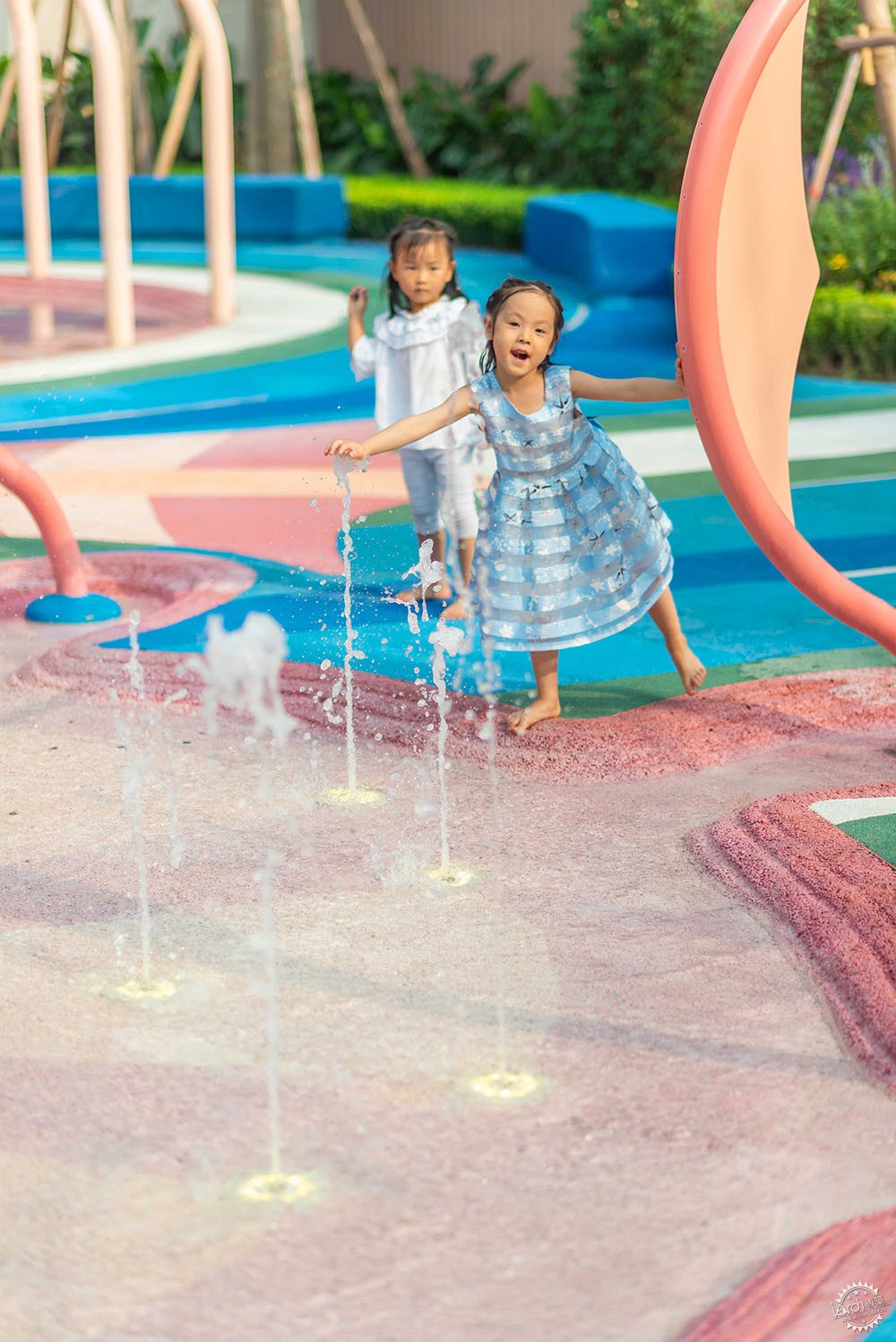
与同伴和环境要素的有意义的体验和互动
摄影师:邹及人
Meaningful experiences & interactions with peers & physical elements
Photo: Amey Kandalgaonkar
积极参与
一些研究表明,积极参与学习体验、记忆发展和信息检索之间存在关联,因此,研究发现适当的参与程度在加强短期记忆方面起到了一定的作用9,这为游戏在学习中的重要性提供了另一个重要案例。
Actively engaging
Some research suggests a correlation between active engagement in the learning experience, memory development and information retrieval, so appropriate levels of engagement was found to play a role in strengthening the short-term memory9, making another important case for the importance of play in learning.
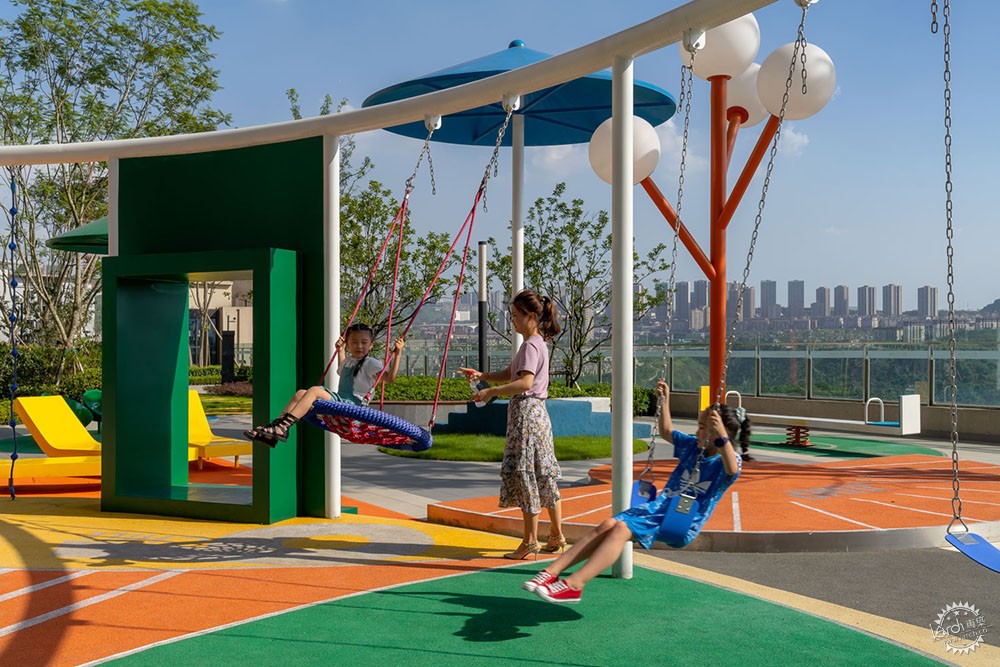
积极参与梦马行云
摄影师:邹及人
Actively engaging play at Horse Land
Photo: Rex Zou
迭代
对儿童的行为研究表明,持续参与学习活动需要有能力选择性地专注于当前情况,忽略干扰并在头脑中保留信息10。如果学习体验的设计/计划不正确,或者进行学习的整体学习环境不合适,这对于儿童而言是颇具挑战的。
Iterative
Behavioral studies with children have shown that sustained engagement in a learning activity demands the ability to stay selectively focused on the situation at present, ignore distractions, and withhold the information in one's head1 0which could be rather challenging for children if the learning experience isnot designed/planned properly or the overall learning environment in which learning takes place is inappropriate.
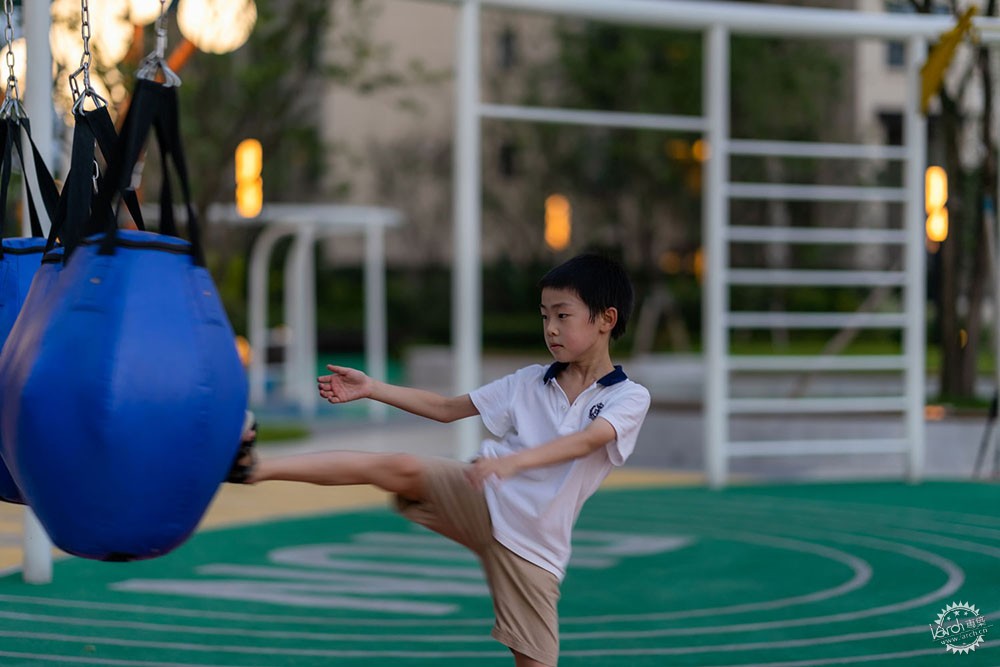
专注于某项活动的参与度
摄影师:邹及人
Engagement by staying focused on an activity
Photo: Rex Zou
社交互动
神经科学研究表明,从发育的早期阶段,社会互动在塑造儿童大脑和行为发展方面起着显著作用11。与同龄人的社交互动有助于儿童发展语言习得、合作和社会学习等技能10,还可以增强对意外情况的适应能力12,从而增强儿童的适应力。
Socially interactive
Neuroscience research has shown that from early stages in development, social interaction plays a remarkable role in shaping children's brain and behavioral development11. Social interactions with peers can help children develop skills such as language acquisition, cooperation, and social learning10 but also enhance adaptability to unexpected circumstances12 enhancing children's resilience.
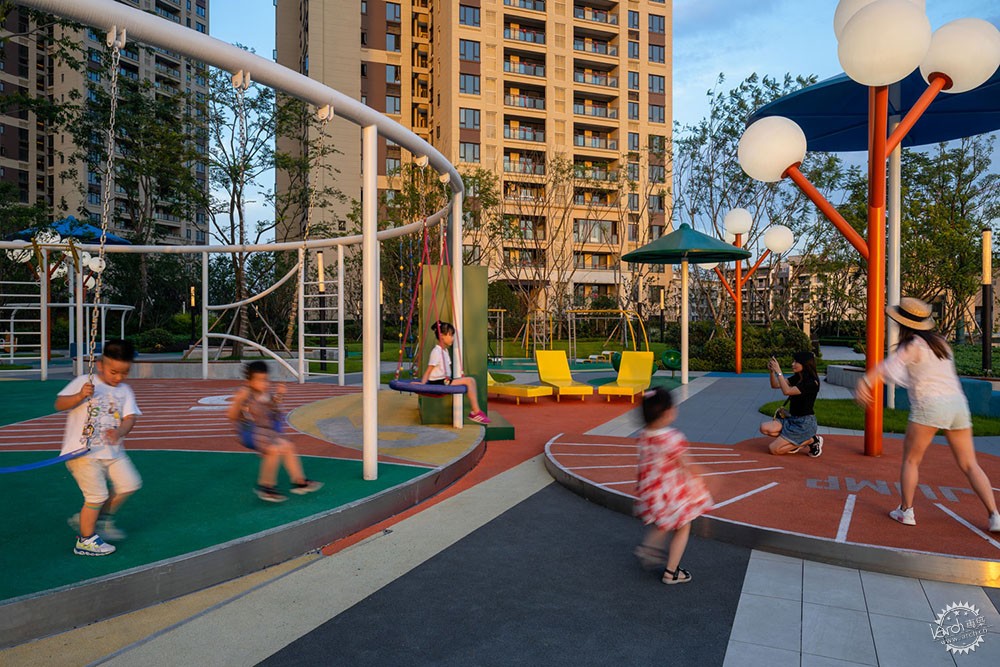
社交互动在塑造孩子的大脑和行为发展中起着重要作用
摄影师:邹及人
social interaction plays a remarkable role in shaping children's brain and behavioral development
Photo: Rex Zou
上述五个特点非常重要,因为它们创造了一种学习风格,让孩子们有选择地去做什么,因此学习成为一种享受的体验,而不是像目前在中国大规模地被认为是一种压力的体验。同时,它也没有给孩子们一个可遵循的脚本。相反,学习过程是由孩子想做什么的内在动机驱动的,这意味着它创造了一个无风险的环境,让孩子们可以不断试验和尝试新的想法,进一步提高他们的学习能力。
The five characteristics described above are extremely important because they create a learning style that gives children a choice about what they want to do, thus learning becomes an enjoyable experience rather than a stressful one, as it is currently perceived on a large scale in China. At the same time, it doesn't give children a script to follow. Instead, the learning process is driven by intrinsic motivation about what the child wants to do, meaning it creates a risk-free environment where kids can experiment and try new ideas, further enhancing their learning abilities.
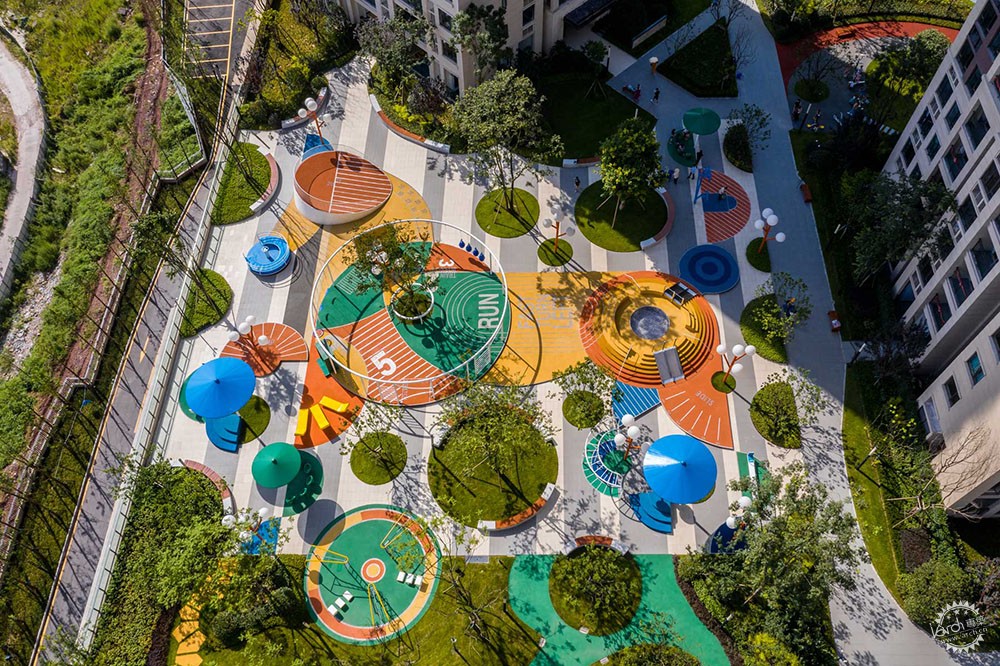
佰筑设计的中国重庆梦马行云
摄影师:邹及人
"Horse Land" Playscape, Chongqing, China, designed by 100architects
Photo: Rex Zou
“寓教于乐”如何普及?
为了让“寓教于乐”自然发生,建立“游戏式学习环境”成为关键。然而,这样的环境在公共空间中已经存在。为了逐一说明“寓教于乐”的5个特征在公共空间设计中的具体体现,本文选取了2个城市干预实例作为研究案例。这两个项目都是由佰筑建筑设计,他们的核心主旨是促进玩乐成为日常生活的一部分,让孩子们快乐。
即使每个项目都对主题有不同的理解和阐释,本文中提及的项目都以马为主题,从而强调了构建环境的多功能性以及如何通过多种方式达到寓教于乐的目的。
How can "learning through play" become widely available?
In order to allow for "learning through play" to occur naturally, building "playful learning environments" becomes key. Yet such environments are already available within the public space. In order to illustrate one by one how the 5 characteristics of "learning through play" can be materialized in the public space design, 2 examples of urban interventions have been chosen as study cases. Both projects were designed by 100 architects whose core mission is to promote play as an integrated part of daily life and make children happy.
The projects considered in this article have as theme the horse, even if each project shows a different understanding and interpretation of the theme, thus emphasizing the versatility of the built environment and how it can serve in multiple ways the learning through play purpose.

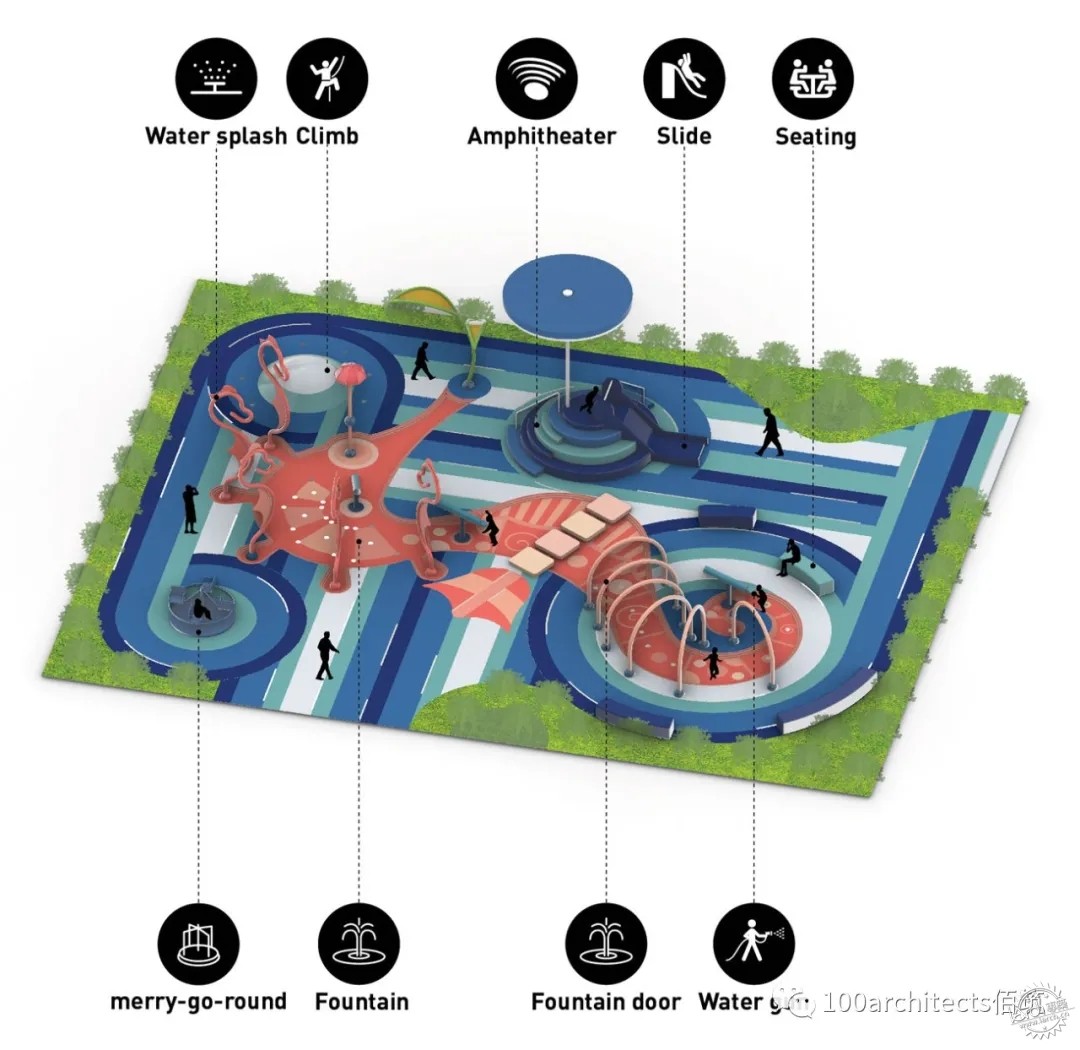
“梦马行云”和“童梦海马”这两个项目都落地于中国重庆。所有项目选择的颜色和形状营造出充满活力的环境,并营造出一种欢乐的气氛,吸引孩子们从事各种更具活力和静态的教育活动。因此,在这样的环境中进行活动可以提高儿童的多巴胺水平,从而增强创造力的思维能力。同时,颜色和形状可以激发孩子的想象力,这是创造性思维发展的另一个因素。
Both projects "Horse Land" and "Sea Horse" were built in Chongqing, China. The colors and shapes chosen for all the projects create vibrant environments and instill a sense of joy, attracting children to engage in all sorts of educational activities, both more dynamic and more static. As a result, performing activities in such environments allows children's dopamine levels to increase, enhancing creative thinking skills. At the same time, the colors and shapes tap on children's imagination, another factor that paves the way for creative thinking development.

鲜艳的色彩增加了儿童的多巴胺水平,增强了创造力和想象力。
摄影师:邹及人
Vibrant colors increase children’slevels of dopamine, enhancing creativity & imagination.
Photo: Rex Zou
所有空间都配备了圆形剧场进行表演,可以作为另一种娱乐活动,从而使孩子们有机会将故事变为现实。根据研究,当给孩子机会表演场景并表达自己的意见时,他们将提高他们的社交信心,并增强他们看待他人观点的能力13。这样,创造了有意义的经验,也帮助孩子学习更多的可转化技能。通过这些城市装置中赋有的各种活动,可以很容易地使孩子们长时间地从事学习和娱乐活动,从而使他们获得轻松和有益的学习经历,而不是一种压力。
All spaces are equipped with an amphitheater, allowing for acting, as another playful activity, to take place, thus giving children an opportunity to bring stories to life. According to research, when children are given opportunities to act out scenes and express themselves, they improve their social confidence and increase their ability to see the perspectives of others13. As such, meaningful experiences are created, helping children learn more transferrable skills as well. Through the variety of activities allowed in these urban installations, it is easy to keep children engaged in learning and playful activities for a longer time, making thus for a relaxing and rewarding learning experience, rather than a stressful one.
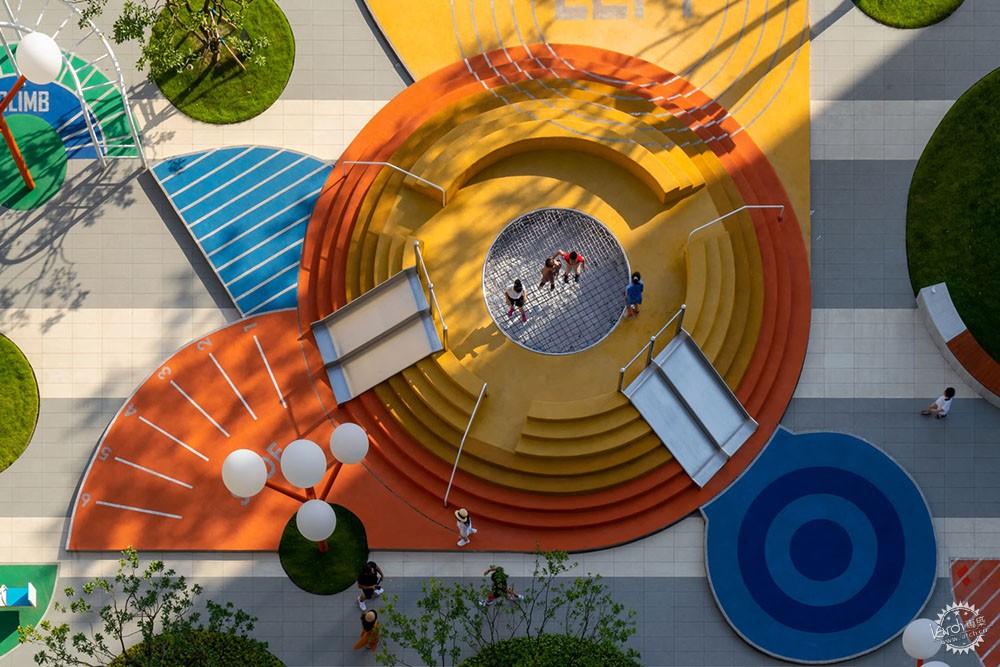
梦马行云的圆形剧场
摄影师:邹及人
Amphitheater at Horse Land
Photo: Rex Zou

童梦海马的圆形剧场
摄影师:邹及人
Amphitheater at Seahorse
Photo: Amey Kandalgaonkar
当有休息室和座位时,在这种学习环境中进行的活动-放松和沉思有助于加强神经连接和知识巩固,从而进一步增强了认知表现14-15。
With lounges and seating available in these environments, moments of relaxation and contemplation to help with strengthening neural connections and solidifying knowledge are possible as well, thus further enhancing cognitive performance14-15as a result of the activities performed in such learning environments.
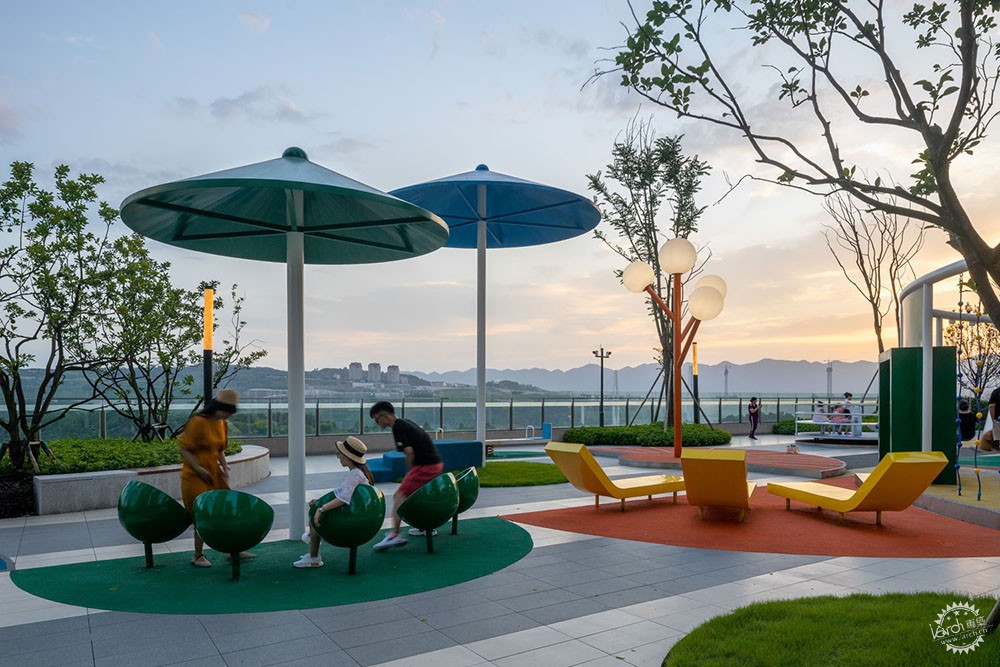
我们项目的共同特征:休息室和休息区
摄影师:邹及人
Lounge and resting areas are acommon feature in our projects.
Photo: Rex Zou
玩乐的环境是所有项目设计的核心内容,因此创造的环境不仅鼓励孩子以互动和放松的方式学习,而且还创造了进行体育锻炼的机会,从而进一步提高了认知能力16-17以及全面身体健康18。
Having the idea of play as a core aspect of all the projects' design, the environments created don't only encourage children to learn in an engaging and relaxing way, but also create opportunities for physical exercise that was found to further enhance cognitive abilities16-17, as well as physical health overall18.
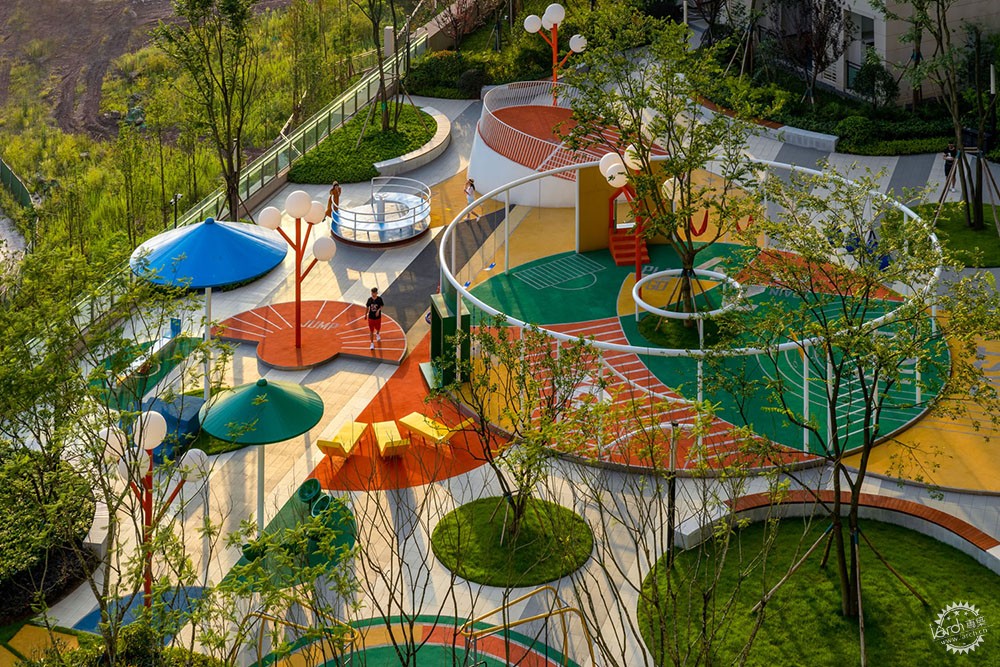
具有挑战性的游戏场景鼓励体育锻炼并增强认知能力
摄影师:邹及人
Challenging playscapes encourage physical exercise and boost cognitive abilities
Photo: Rex Zou
由佰筑设计的城市装置具有诸多神经生物学的益处,“游戏式学习环境”可广泛用于儿童体验和提高学习成果,而不仅仅是单纯地硬背,同时还能减轻压力和焦虑,提高幸福感。这对房地产开发商和政府投资此类项目应该是极大的鼓励,以促进年轻一代健康的思想和健康的身体,并使这些城市装置在购物中心、公园和住宅区的公共空间中可用。同时,这种环境带来的神经生物学益处为不仅在公共场所,而且在学校和其他教育机构中创造这种城市装置提供了强烈的动力,使学习过程从完全的室内环境过渡到室外环境,在游戏中学习成为日常生活中不可或缺的一部分。
With the numerous neurobiological benefits that the urban installations designed by 100architects, "playful learning environments" can become widely available for children to experience and enhance learning outcomes in a much more engaging way than pure memorizing, while reducing levels of stress and anxiety and boosting levels of happiness. This creates a strong incentive for both real-estate developers and governments to invest in such projects in order to promote healthy minds and healthy bodies for the younger generation and make such urban installations available across the public space in shopping malls, parks, as well as residential compounds. At the same time, the neurobiological benefits that such environments bring create a strong incentive for such urban installations to be built not only in the public space, but also schools and other educational institutions, allowing the learning process to cross-overfrom a fully indoor environment to an outdoor one, making learning through playan integrated part of daily life.
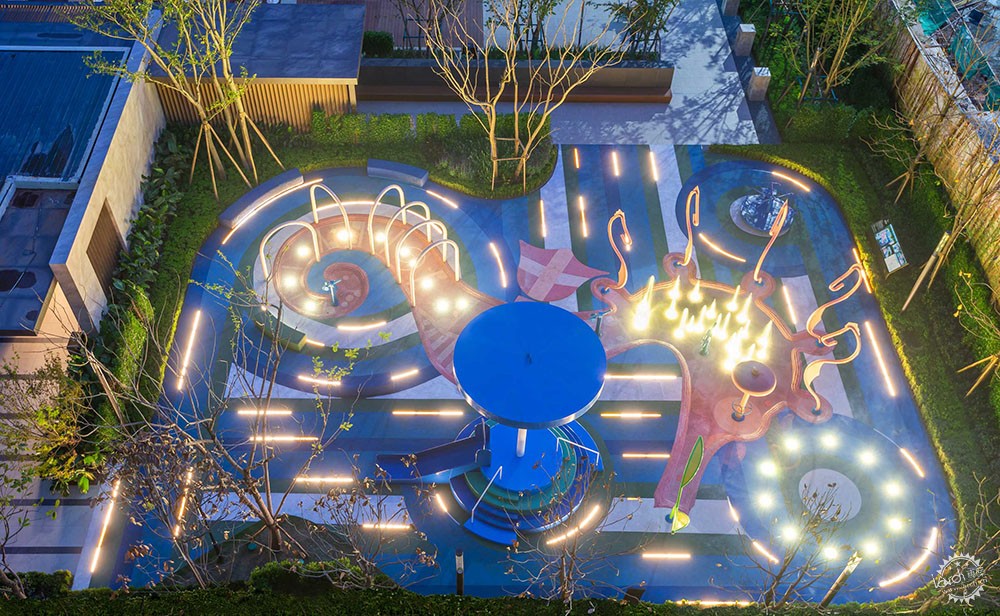
童梦海马夜景
摄影师:Amey Kandalgonkar
Night effect at Seahorse
Photo: Amey Kandalgaonkar
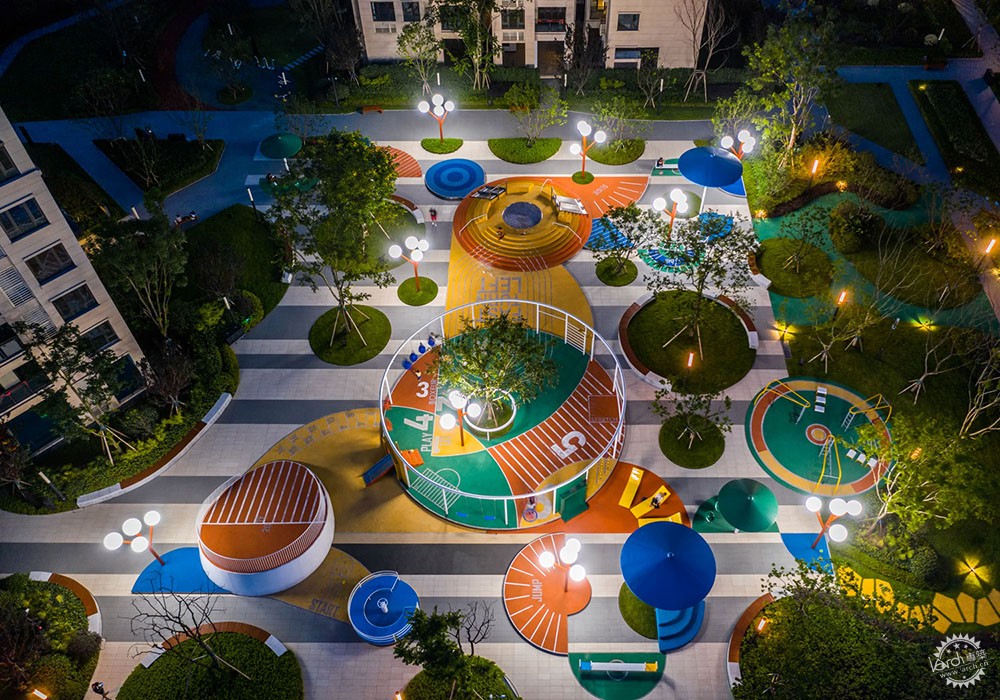
梦马行云夜景
摄影师:邹及人
Night effect at Horse Land
Photo: Rex Zou
文章出自:
邱天美
环境心理学研究员
公关执行人
参考文献:
1. Vitasari,P., Wahab, M. N. A., Othman, A., Herawan, T., &Sinnadurai, S. K. (2010).The Relationship between Study Anxiety and Academic Performance amongEngineering Students. Procedia - Social and Behavioral Sciences, 8, 490–497.https://doi.org/10.1016/j.sbspro.2010.12.067
2. Bell, P. A.(Ed.). (2001). Environmental psychology (5th ed). Harcourt College Publishers.
Center on theDeveloping Child. (n.d.). Learning Through Play. Using games and play coachingto improve executive function. https://developingchild.harvard. ... rning-through-play/
3. Kangas, M.,&Ruokamo, H. (2012). Playful Learning Environments: Effects on Children’sLearning. In N. M. Seel (Ed.), Encyclopedia of the Sciences of Learning (pp. 2653–2655).Springer US. https://doi.org/10.1007/978-1-4419-1428-6_756
4. Weisberg,D. S., & Gopnik, A. (2013). Pretense, Counterfactuals, and Bayesian CausalModels: Why What Is Not Real Really Matters. Cognitive Science, 37(7),1368–1381. https://doi.org/10.1111/cogs.12069
5. Zosh, J.N., & LEGO Fonden. (2017). Learning through play: A review of the evidence.LEGO Fonden.
6. Liu, C.,Solis, S. L., Jensen, H., Hopkins, E., Neale, D., Zosh, J., Hirsh-Pasek, K.,&Whitebread, D. (2017). Neuroscience and learning through play: A review ofthe evidence (research summary). The LEGO Foundation.
7. Kang, M.J., Hsu, M., Krajbich, I. M., Loewenstein, G., McClure, S. M., Wang, J. T.,& Camerer, C. F. (2009). The Wick in the Candle of Learning: EpistemicCuriosity Activates Reward Circuitry and Enhances Memory. PsychologicalScience, 20(8), 963–973. https://doi.org/10.1111/j.1467-9280.2009.02402.x
8. Takeuchi,H., Taki, Y., Sassa, Y., Hashizume, H., Sekiguchi, A., Fukushima, A., &Kawashima, R. (2010). Regional gray matter volume of dopaminergic systemassociate with creativity: Evidence from voxel-based morphometry. NeuroImage,51(2), 578–585. https://doi.org/10.1016/j.neuroimage.2010.02.078
9. Johnson,E. L., Miller Singley, A. T., Peckham, A. D., Johnson, S. L., & Bunge, S.A. (2014). Task-evoked pupillometry provides a window into the development ofshort-term memory capacity. Frontiers in Psychology, 5.https://doi.org/10.3389/fpsyg.2014.00218
10. Diamond,A. (2013). Executive Functions. Annual Review of Psychology, 64(1), 135–168.https://doi.org/10.1146/annurev-psych-113011-143750
11. Nelson, E.E. (2017). Learning through the ages: How the brain adapts to the social worldacross development. Cognitive Development, 42, 84–94.https://doi.org/10.1016/j.cogdev.2017.02.013
12. Maier, S.F., & Watkins, L. R. (2010). Role of the medial prefrontal cortex in copingand resilience. Brain Research, 1355, 52–60.https://doi.org/10.1016/j.brainres.2010.08.039
https://www.whitbyschool.org/pas ... -learn-through-play
13. Mead, S.(n.d.). How Do Children Learn Through Play?
14. Morgan,P. F. (2015). A Brief History of the Current Reemergence of ContemplativeEducation. Journal of Transformative Education, 13(3), 197–218.https://doi.org/10.1177/1541344614564875
15. Shapiro,S. L., Lyons, K. E., Miller, R. C., Butler, B., Vieten, C., &Zelazo, P. D.(2015). Contemplation in the Classroom: A New Direction for Improving ChildhoodEducation. Educational Psychology Review, 27(1), 1–30.https://doi.org/10.1007/s10648-014-9265-3
16. Donnelly,J. E., Hillman, C. H., Castelli, D., Etnier, J. L., Lee, S., Tomporowski, P.,
Lambourne,K., & Szabo-Reed, A. N. (2016). Physical Activity, Fitness, CognitiveFunction, and Academic Achievement in Children: A Systematic Review. Medicine& Science in Sports & Exercise, 48(6), 1197–1222.https://doi.org/10.1249/MSS.0000000000000901
17. Ploughman,M. (2008). Exercise is brain food: The effects of physical activity oncognitive function. Developmental Neurorehabilitation, 11(3), 236–240.https://doi.org/10.1080/17518420801997007
18. Reiner,M., Niermann, C., Jekauc, D., &Woll, A. (2013). Long-term health benefitsof physical activity – a systematic review of longitudinal studies. BMC PublicHealth, 13(1), 813. https://doi.org/10.1186/1471-2458-13-813
来源:本文由100architects提供稿件,所有著作权归属100architects所有。
|
|
